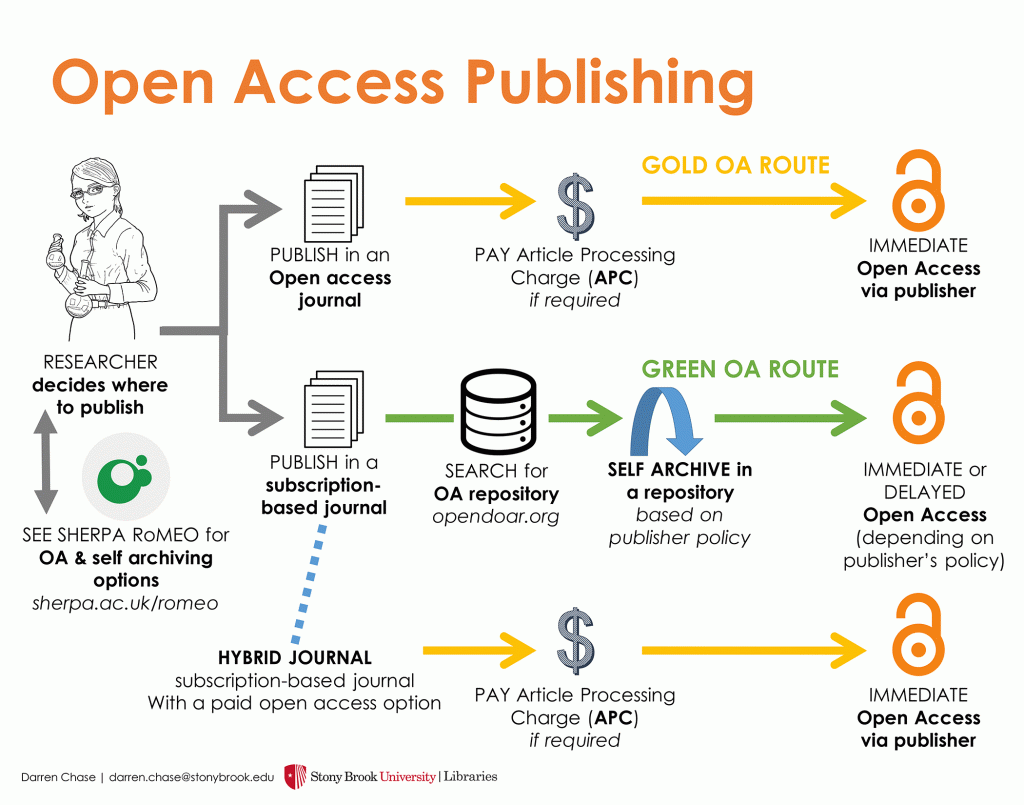
Types of Open Access
Traditionally, academic research is published in journals that individuals or institutions such as academic libraries pay a subscription price to access. if you don't pay the fee, you don't have access. Over the last 10-20 years, there has been growing pressure to revise this model, in large part due to high subscription costs. Another approach has been to push for government funded research to be openly available since taxpayers fund the research. For example, most articles funded by the National institutes of Health (NIH) must be made openly available to the public within one year of publication. This benefits not only American taxpayers, but also researchers throughout the world who cannot afford to pay for access.
Open access is an alternative method to make research available beyond those who can pay for it. Open access is a relatively new phenomenon in the scholarly publishing world. Because this is a young movement still developing standards, there are currently many types of open access. Having said that, open access journals usually fit within three basic types:
- Gold Open Access - the journal publisher makes all articles and related content available for free on the journal's website. Researchers immediately have access to the journal's content upon publication.
- Platinum Open Access - the journal allows immediate access to the contents of a journal without a subscription or license AND authors pay no article-processing charges (APCs).
- Green Open Access - after completing the peer review process, the author can post the same content to a website controlled by the author, by the research institutions that funded or hosted the work, or to a central open access repository (e.g., Scholar Commons). Depending upon the journal, this could be either a pre-print or post-print version of the article.
- Hybrid Open Access (AKA Paid Open Access) - journals are jointly funded by subscriptions and publication fees charged to authors. Author charges (APCs) can be paid by the author, the author's organization, or by the research funder. Only articles paid for upfront are open access. Depending upon the journal, this could be either a pre-print or post-print version of the article.
A fifth option, which is just beginning to emerge, is for nonprofit publishers to make a journal open access if enough institutions retain a subscription to the journal so the publisher has a stable funding mechanism.
